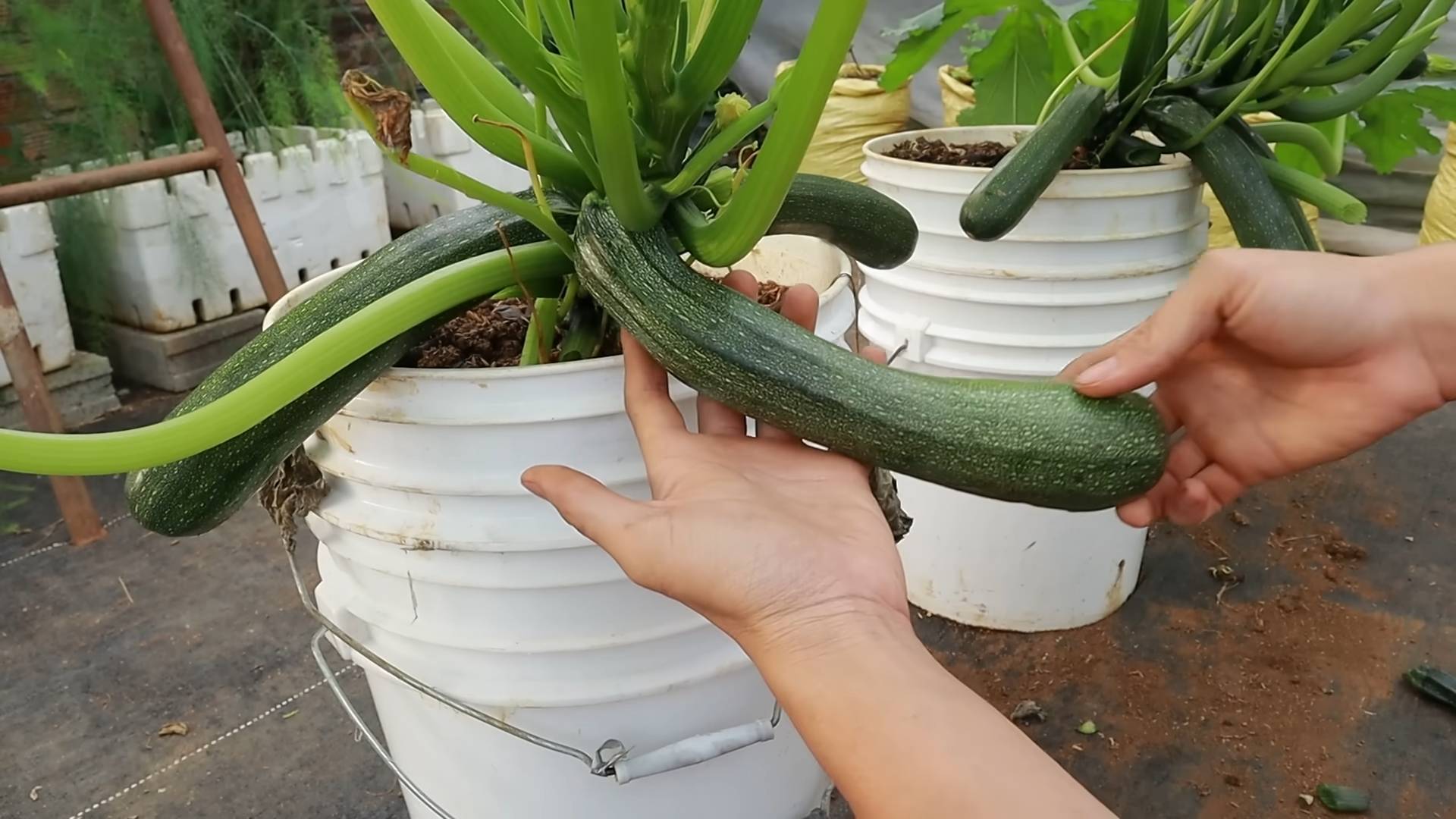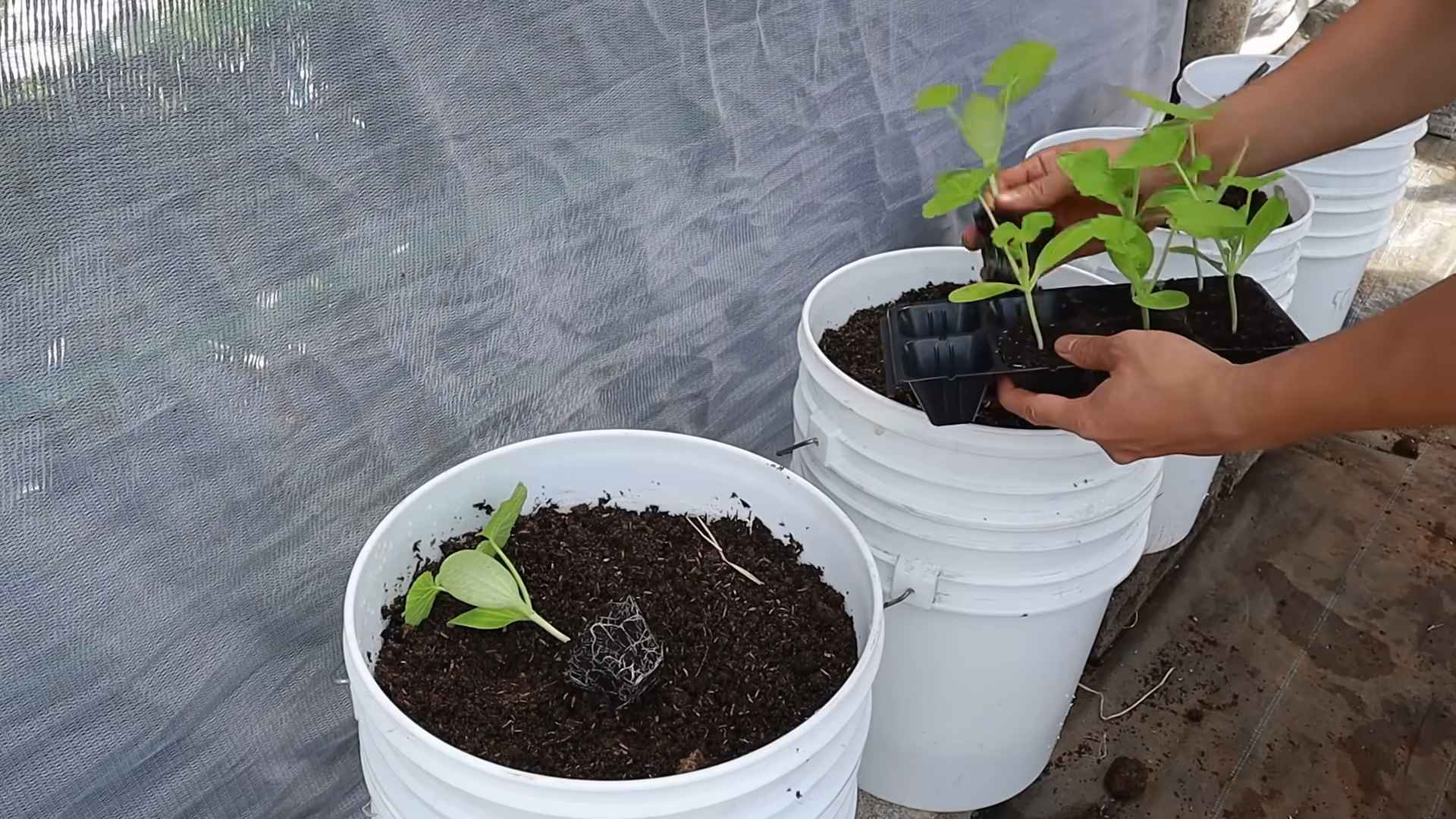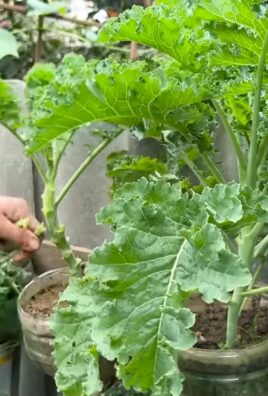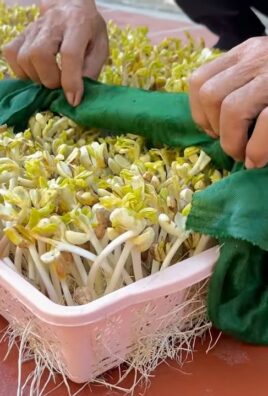Zucchini Growing Tips: Ever dreamt of a garden overflowing with vibrant, green zucchini, ready to be transformed into delicious dishes? I know I have! But let’s be honest, sometimes those zucchini plants can be a bit… temperamental. You might end up with a single, lonely zucchini, or worse, a plant plagued by pests and diseases. That’s where these DIY tricks and hacks come in!
For centuries, zucchini, a member of the squash family, has been a staple in cuisines around the world. Originating in the Americas, it quickly spread to Europe and beyond, becoming a beloved ingredient in everything from ratatouille to zucchini bread. Its versatility and ease of cultivation have made it a popular choice for home gardeners everywhere.
But even with its relatively simple nature, mastering zucchini growing tips can be the difference between a bountiful harvest and a disappointing one. That’s why I’ve compiled this guide of easy-to-implement DIY solutions to common zucchini growing problems. From preventing powdery mildew to attracting pollinators, these hacks will help you maximize your yield and enjoy a season full of fresh, homegrown zucchini. So, grab your gardening gloves, and let’s get started!

Unlock a Bumper Crop: My Foolproof Guide to Growing Zucchinis Like a Pro!
Hey there, fellow garden enthusiasts! I’m so excited to share my tried-and-true secrets for growing zucchinis that are so plentiful, you’ll be giving them away to everyone you know (and still have plenty left for yourself!). I’ve learned a lot over the years, and I’m going to break it all down for you, step-by-step, so you can have a zucchini bonanza in your own backyard.
Choosing the Right Zucchini Variety
Before we even get our hands dirty, let’s talk about zucchini varieties. There’s more to it than just the standard green ones! Choosing the right variety for your climate and preferences can make a huge difference.
* Classic Green Zucchinis: These are your workhorses – reliable and productive. ‘Black Beauty’ is a popular choice, known for its dark green skin and consistent yields. ‘Spineless Beauty’ is another great option if you want to avoid those prickly stems.
* Yellow Zucchinis: ‘Golden Zucchini’ is a vibrant yellow variety that adds a pop of color to your garden and your plate. They taste very similar to green zucchinis.
* Round Zucchinis: ‘Eight Ball’ and ‘Ronde de Nice’ are adorable round zucchinis that are perfect for stuffing. They’re a bit more compact than the long varieties, which can be helpful if you have limited space.
* Consider Disease Resistance: If you’ve had problems with powdery mildew or other zucchini diseases in the past, look for varieties that are specifically bred for resistance.
Preparing Your Garden for Zucchini Success
Zucchinis are hungry plants, so preparing the soil is crucial. They need plenty of sunshine and well-drained soil that’s rich in organic matter.
* Sunlight: Zucchinis need at least 6-8 hours of direct sunlight per day. Choose a spot in your garden that gets plenty of sun.
* Soil: Zucchinis thrive in well-drained soil that’s rich in organic matter. Before planting, amend your soil with compost, aged manure, or other organic materials. This will improve drainage, add nutrients, and help retain moisture.
* Soil pH: Zucchinis prefer a slightly acidic to neutral soil pH, between 6.0 and 7.5. You can test your soil pH with a soil testing kit and amend it accordingly.
* Spacing: Zucchinis need plenty of space to grow. Space plants 2-3 feet apart in rows that are 3-4 feet apart. This will allow for good air circulation and prevent overcrowding.
Planting Your Zucchini Seeds or Seedlings
Now for the fun part – getting those zucchinis in the ground! You can start zucchini seeds indoors or direct sow them in your garden.
* Starting Seeds Indoors (Optional): If you want to get a head start on the season, you can start zucchini seeds indoors 3-4 weeks before the last expected frost. Sow seeds ½ inch deep in seed-starting trays or pots filled with seed-starting mix. Keep the soil moist and warm (around 70-80°F). Once the seedlings have a few true leaves, you can transplant them into your garden after the last frost.
* Direct Sowing: Direct sowing is the easiest method. Wait until the soil has warmed up to at least 60°F before planting. Sow seeds ½ inch deep and 2-3 feet apart. Water well after planting.
* Hardening Off Seedlings: If you started your seeds indoors, you’ll need to harden them off before transplanting them into your garden. This means gradually exposing them to outdoor conditions over a period of 1-2 weeks. Start by placing the seedlings in a sheltered spot outdoors for a few hours each day, gradually increasing the amount of time they spend outside.
* Transplanting Seedlings: When transplanting seedlings, dig a hole that’s slightly larger than the root ball. Gently remove the seedling from its pot and place it in the hole. Backfill with soil and water well.
Watering and Fertilizing Your Zucchinis
Zucchinis need consistent watering and feeding to produce a bountiful harvest.
* Watering: Zucchinis need about 1 inch of water per week. Water deeply and regularly, especially during hot, dry weather. Avoid overhead watering, as this can lead to fungal diseases. Soaker hoses or drip irrigation are ideal for watering zucchinis.
* Fertilizing: Zucchinis are heavy feeders and benefit from regular fertilization. Apply a balanced fertilizer (such as 10-10-10) every 2-3 weeks. You can also side-dress your plants with compost or aged manure.
* Mulching: Mulching around your zucchini plants will help retain moisture, suppress weeds, and keep the soil cool. Use organic mulches such as straw, hay, or wood chips.
Dealing with Pests and Diseases
Unfortunately, zucchinis are susceptible to a few pests and diseases. But don’t worry, with a little vigilance, you can keep your plants healthy and productive.
* Squash Bugs: Squash bugs are common pests that can damage zucchini plants. They suck the sap from the leaves, causing them to wilt and die. Handpick squash bugs and their eggs (which are usually found on the undersides of leaves) regularly. You can also use insecticidal soap or neem oil to control squash bugs.
* Squash Vine Borers: Squash vine borers are another common pest that can kill zucchini plants. The larvae of these moths bore into the stems of the plants, causing them to wilt and die. To prevent squash vine borers, wrap the base of the stems with aluminum foil or netting. You can also use Bacillus thuringiensis (Bt) to control squash vine borers.
* Powdery Mildew: Powdery mildew is a fungal disease that can affect zucchini plants, especially in humid conditions. It appears as a white, powdery coating on the leaves. To prevent powdery mildew, provide good air circulation around your plants and avoid overhead watering. You can also use a fungicide to control powdery mildew.
* Cucumber Beetles: These beetles can spread bacterial wilt and other diseases. Use row covers early in the season to protect young plants. Insecticidal soap can also help control them.
Harvesting Your Zucchinis
The best part of growing zucchinis is, of course, harvesting them! Zucchinis grow quickly, so you’ll need to check your plants regularly.
* When to Harvest: Harvest zucchinis when they are young and tender, usually when they are 6-8 inches long. Larger zucchinis can be tough and seedy.
* How to Harvest: Use a sharp knife or pruners to cut the zucchini from the plant. Be careful not to damage the plant.
* Regular Harvesting: The more you harvest, the more your plants will produce. So, don’t be afraid to harvest frequently!
* Overripe Zucchinis: If you miss a zucchini and it grows too large, don’t worry! You can still use it for zucchini bread or other recipes. Just remove the seeds and tough skin.
Tips and Tricks for Maximizing Your Zucchini Harvest
Here are a few extra tips and tricks that I’ve learned over the years to help you maximize your zucchini harvest:
* Companion Planting: Plant zucchinis with companion plants such as beans, corn, and marigolds. These plants can help deter pests and improve soil health.
* Hand Pollination: If you’re not getting enough zucchini fruit, you can try hand-pollinating the flowers. Use a small paintbrush to transfer pollen from the male flowers to the female flowers. Female flowers have a small zucchini fruit at the base, while male flowers do not.
* Succession Planting: Plant zucchini seeds every 2-3 weeks to extend your harvest season.
* Blossom End Rot Prevention: Blossom end rot, characterized by a dark, sunken spot on the blossom end of the fruit, is often caused by calcium deficiency or inconsistent watering. Ensure consistent watering and consider adding calcium to the soil.
* Don’t Forget the Flowers! Zucchini blossoms are edible and delicious! You can stuff them with cheese and herbs, batter them and fry them, or add them to salads. Harvest the male flowers to avoid reducing fruit production.
Storing Your Zucchinis
If you’re like me, you’ll end up with more zucchinis than you know what to do with! Here are a few tips for storing your zucchinis:
* Refrigeration: Store zucchinis in the refrigerator for up to a week. Wrap them in a paper towel to absorb excess moisture.
* Freezing: You can freeze zucchinis for longer storage. Wash, slice, and blanch the zucchinis for 2-3 minutes. Then, cool them in ice water and drain well. Pack the zucchinis in freezer bags or containers and freeze.
* Pickling: Pickled zucchini is a delicious way

Conclusion
So, there you have it! Mastering the art of growing zucchini doesn’t have to be a daunting task. By implementing these simple yet effective DIY zucchini growing tips, you’re setting yourself up for a bountiful harvest of this versatile and delicious vegetable. We’ve covered everything from soil preparation and proper watering techniques to pest control and maximizing pollination. Remember, a little bit of effort goes a long way when it comes to nurturing your zucchini plants.
Why is this a must-try? Because fresh, homegrown zucchini tastes infinitely better than anything you can buy at the store. Plus, knowing you cultivated it yourself adds a layer of satisfaction that’s hard to beat. Imagine the delicious zucchini bread, fritters, and stir-fries you can create with your own homegrown bounty! And let’s not forget the joy of sharing your harvest with friends and neighbors.
But the benefits extend beyond just the culinary. Gardening is a fantastic way to relieve stress, connect with nature, and get some much-needed vitamin D. Growing your own food also promotes sustainability and reduces your carbon footprint. It’s a win-win for you and the planet!
Looking for variations? Consider companion planting. Marigolds, for example, are known to deter pests, while beans can help fix nitrogen in the soil, benefiting your zucchini plants. You can also experiment with different zucchini varieties. From the classic dark green zucchini to the golden yellow varieties and even round zucchini, there’s a whole world of zucchini to explore. Don’t be afraid to try something new and see what grows best in your garden. Another variation is to try succession planting, planting new zucchini seeds every few weeks to ensure a continuous harvest throughout the growing season. This is especially helpful if you live in a region with a shorter growing season.
We’ve also touched on the importance of proper watering. Remember, zucchini plants need consistent moisture, especially during hot weather. However, avoid overwatering, as this can lead to root rot. A good rule of thumb is to water deeply but infrequently, allowing the soil to dry out slightly between waterings.
And when it comes to pest control, remember that prevention is key. Regularly inspect your plants for signs of pests and diseases, and take action promptly if you spot any problems. Organic pest control methods, such as neem oil and insecticidal soap, are effective and safe for your plants and the environment.
Ultimately, the best way to learn is by doing. So, grab your gardening gloves, get your hands dirty, and start growing your own zucchini today! We’re confident that with these DIY zucchini growing tips, you’ll be well on your way to a successful harvest.
We’re eager to hear about your experiences! Did you try any of these tips? What worked well for you? What challenges did you face? Share your stories and photos in the comments below. Let’s create a community of zucchini growers who can learn from each other and celebrate the joys of homegrown produce. Happy gardening!
Frequently Asked Questions (FAQ)
Q: How much sun do zucchini plants need?
A: Zucchini plants are sun-loving vegetables and require at least 6-8 hours of direct sunlight per day to thrive. Insufficient sunlight can lead to stunted growth, reduced fruit production, and increased susceptibility to diseases. Choose a sunny spot in your garden where your zucchini plants will receive ample sunlight throughout the day. If you live in a particularly hot climate, some afternoon shade can be beneficial to prevent the plants from overheating.
Q: What kind of soil is best for growing zucchini?
A: Zucchini plants prefer well-drained, fertile soil that is rich in organic matter. The ideal soil pH is between 6.0 and 7.5. Before planting, amend your soil with compost, aged manure, or other organic materials to improve its fertility and drainage. If your soil is heavy clay, consider adding sand or perlite to improve drainage. A soil test can help you determine the pH and nutrient levels of your soil and identify any amendments that may be needed.
Q: How often should I water my zucchini plants?
A: Zucchini plants need consistent moisture, especially during hot weather. Water deeply but infrequently, allowing the soil to dry out slightly between waterings. A good rule of thumb is to water when the top inch of soil feels dry to the touch. Avoid overwatering, as this can lead to root rot. Water at the base of the plant to avoid wetting the foliage, which can increase the risk of fungal diseases. Mulching around the plants can help retain moisture in the soil and reduce the need for frequent watering.
Q: Why are my zucchini flowers falling off without producing fruit?
A: This is a common problem called blossom drop, and it’s often caused by inadequate pollination. Zucchini plants have separate male and female flowers, and pollination is necessary for fruit to develop. Several factors can contribute to poor pollination, including lack of pollinators (bees, butterflies, etc.), high temperatures, and insufficient watering. To improve pollination, you can hand-pollinate the flowers by transferring pollen from the male flowers to the female flowers using a small brush. You can also attract more pollinators to your garden by planting flowers that attract bees and butterflies.
Q: What are some common pests and diseases that affect zucchini plants?
A: Zucchini plants are susceptible to several pests and diseases, including squash bugs, squash vine borers, aphids, powdery mildew, and squash mosaic virus. Regularly inspect your plants for signs of pests and diseases, and take action promptly if you spot any problems. Organic pest control methods, such as neem oil and insecticidal soap, are effective and safe for your plants and the environment. To prevent diseases, ensure good air circulation around your plants and avoid wetting the foliage when watering.
Q: How do I know when my zucchini is ready to harvest?
A: Zucchini is best harvested when it is young and tender, typically when it is about 6-8 inches long. Larger zucchini can become tough and seedy. Use a sharp knife to cut the zucchini from the plant, leaving a short stem attached. Harvest regularly to encourage continued fruit production.
Q: Can I eat zucchini blossoms?
A: Yes, zucchini blossoms are edible and can be a delicious addition to your meals. They can be stuffed, fried, or added to soups and salads. Harvest the blossoms in the morning when they are fresh and open. Remove the pistil from the female flowers and the stamen from the male flowers before cooking.
Q: How can I store zucchini?
A: Zucchini can be stored in the refrigerator for up to a week. Wrap the zucchini in a paper towel and place it in a plastic bag to help retain moisture. You can also freeze zucchini for longer storage. Shred or slice the zucchini and blanch it in boiling water for a few minutes before freezing.
Q: What are some creative ways to use zucchini?
A: Zucchini is a versatile vegetable that can be used in a variety of dishes. It can be grilled, roasted, sautéed, or added to soups, stews, and stir-fries. Zucchini can also be used to make zucchini bread, muffins, fritters, and even noodles (zoodles). Get creative and experiment with different recipes to find your favorite ways to enjoy this delicious vegetable.





Leave a Comment